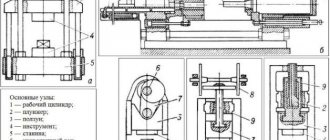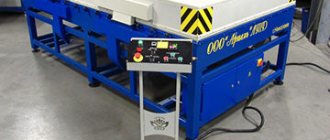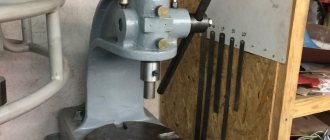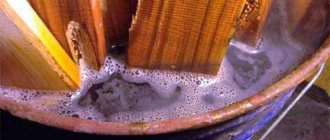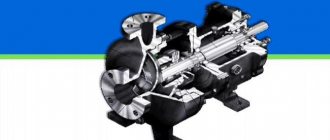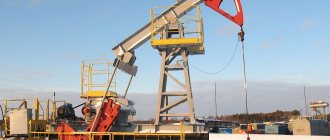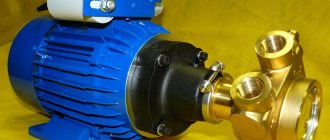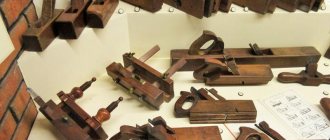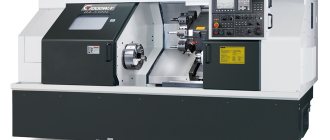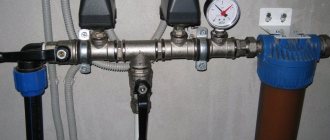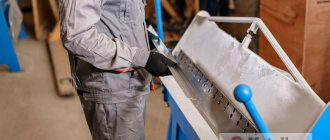What is a membrane vacuum press?
A vacuum membrane press is a special device designed for the production of kitchen countertops, furniture fronts, interior doors, decorative acrylic or plastic components. This machine, when using the appropriate consumables, makes it possible to complement sets with very special decorative elements. This significantly increases the competitive advantages of the manufacturing company, which uses a vacuum press for MDF facades (or simply facades or MDF).
What is a membrane vacuum press?
The simplest type of vacuum veneer press uses a sealed bag and a vacuum generator. The user places the materials in the bag, the machine seals it and then sucks out most of the air. This creates a pressure difference between the reduced pressure inside the bag and the atmosphere outside. It is this difference that is used during vacuum pressing.
Most vacuum pumps and generators achieve around 85% vacuum. Since atmospheric pressure is about 10 tons per square meter, this means that everything inside the vacuum press bag is subject to 8.5 tons of pressure per square meter.
How the equipment works
The vacuum press for facades has the following components:
- frame, which is load-bearing and has a collapsible type
- desktop, which is also load-bearing. A special clamp-type frame is installed on the table
- vacuum pneumatic working system. Without it it is impossible to implement the entire technological process
- retractable carriage. It is equipped with electric heating devices. The vacuum press operates using automatic control, therefore, performing work on this equipment does not require manual labor. A few operators are sufficient to maintain and run the installation.
Vacuum press design
Vacuum press design
A vacuum press for furniture facades and other parts consists of the following main components:
- Vacuum press table. This is a flat surface on which the operator places workpieces. Due to the specific nature of using a vacuum press for MDF and other materials, this surface must be strong, rigid and absolutely smooth. Therefore, the table is trimmed with thick tin or sheet metal;
- Vacuum pump. The pump pumps out air from under acrylic or other film that is used in furniture factories;
- Pressure frame. An important part of the vacuum press device, which controls the tightness of the air gap under the film coating. This part is also made of strong metal and complemented with powerful clamps;
- Vacuum press cover for plastic, MDF, ceramics. It can be rolling or folding;
- A heating element. It can be developed on the basis of various kinds of functional components. For heating, a PVSK 6 drying chamber is used, which includes special quartz lamps.
Most modifications of vacuum presses for ceramics, MDF and plastic are complemented by one or more shafts that are mounted at the end of the machine. These shafts significantly simplify the work of the machine, increase the comfort of use, and reduce the time required to carry out technical processes. Rolls of film used for finishing workpieces are installed on them.
Also, many of the latest models of vacuum sublimation presses are equipped with numerical control systems and operate automatically. Such equipment is especially useful for industries that mass-produce furniture, when it is necessary to cover a large number of identical pieces with veneer or film on one unit. For “wholesale” processes, CNC systems are indispensable, as they have a positive effect on productivity and reduce the cost of manufactured goods.
We are starting a series of articles devoted to the issues of self-manufacturing a vacuum press for the production of furniture facades from MDF, coated with PVC films (film facades), as well as decorative door trims. All material in the articles was based on personal experience in organizing the production of film facades from scratch, including making the vast majority of equipment and fixtures with your own hands. The material in the articles does not claim to be absolutely accurate and true, but only describes one specific (special) case and an individual vision of the issues under consideration.
The articles will touch upon issues directly related to the manufacture and operation of a homemade vacuum press; related topics (for example, milling facades, applying glue, etc.) are planned to be considered in other, separate articles.
Information presentation plan:
- Theoretical foundations of vacuum pressing of PVC films. The production is perfect for her. What kind of press are we building?
- Stand on.
- Vacuum table.
- Air pumping system (vacuum system).
- Thermal module.
- Electrical control cabinet.
Before starting the story, it is necessary to warn potential press repeaters about the possible risk to their health. Making your own is a good thing, we always welcome it, but we must not forget about safety precautions. While working on the manufacture of a press, you will have to deal with electrical voltages of up to 400 V, high temperatures, high-risk power tools, and massive, heavy metal structures. Be aware of your own actions! Soberly evaluate your knowledge and skills! If you have doubts about the correctness of a particular operation, be sure to consult with a specialist or completely delegate the work to him. Do not neglect personal protective equipment; it is better to purchase all the essentials in advance: welder’s clothing and mask, glasses or a mask to protect the eyes and face, durable gloves for working with metal, headphones to reduce sound pressure on the ear.
Theoretical foundations of vacuum pressing of PVC films.
Film facades have been used for a very long time in the manufacture of cabinet (sometimes hard elements of upholstered) furniture, but are still very popular due to their rich color range, variety of shapes and low price. Unlike some other types of furniture facades (for example, frame ones), film facades are manufactured only using specialized equipment, which requires considerable production space and energy supply. The main machine in the production of MDF facades covered with PVC films is rightfully considered a vacuum press. A vacuum (often called a thermal vacuum) press shrinks a PVC film onto the surface of an MDF workpiece (facade, door trim, etc.).
Any thermal vacuum press for the production of film facades consists of two main elements: a vacuum chamber (table, bath) and a heater (thermal module). The vacuum chamber, as a rule, has a rectangular shape (parallelepiped), all walls (except for the top) are made of rigid material (for example, steel) that is not subject to compression under the influence of artificially created negative pressure inside the chamber. PVC film is placed on top of the chamber, the edges of the film are sealed with the frame. Thus, we get a sealed volume: there is a sheet of PVC film on top, and a rigid vacuum chamber on the bottom and sides. Before covering with PVC film and sealing the internal volume of the vacuum bath, blanks of future furniture facades, pre-coated with a special heat-activated glue, are placed in the internal space of the vacuum bath in a certain way. At room temperature, PVC film is very rigid; without heating, it will not be able to wrap around the entire relief of the workpiece. Also, without heating, the film will not be able to stick to the workpiece, since the activation temperature of the glue starts at 50°C. Electric heating devices (infrared incandescent lamps or heating elements) are used to heat the film. The total power of all heating devices is high and, as a rule, ranges from one to several tens of kilowatts.
Factory-made thermal vacuum press with vertical raising of the thermal module. Essential elements.
Note: there are presses with the so-called. upper pressure, they, in addition to pumping air from a sealed chamber from below, have another chamber above the film, into which air is pumped in excess of atmospheric pressure (additional pressure is applied to the film from above). Such presses, of course, compare favorably with a number of characteristics compared to presses without upper pressure. However, such equipment is much more difficult to manufacture independently and will not be considered in this series of articles.
So, the process of shrinking (they also say stretching) the film consists of the following sequential basic operations:
- Laying blanks on the press table.
- Covering with PVC film, sealing.
- Heating the film to a certain temperature.
- Pumping out air.
- Cooling.
- Cutting blanks, removing excess film from facades.
With a well-functioning production process, a typical stretch of one table (from covering with film to cutting out the finished facades) takes no more than 10 minutes. However, in order to achieve such results, working on a homemade vacuum press, you need to have a very large skill, a number of experimental data on drawing a particular type of film, obtained on the basis of your own trial and error. It is strongly recommended to thoroughly weigh all the pros and cons, and take on making a press with your own hands only in conditions of strict financial savings, availability of free time, great desire, and self-confidence.
Furniture facades are made using a homemade press.
The door linings are made using a homemade press.
Setting goals. What kind of press are we building?
Before proceeding directly to the manufacture of the press, it is necessary to set the final goal, that is, to determine with what characteristics, capabilities and at what cost we should ultimately obtain a homemade vacuum press.
Anyone who has ever seriously thought about making any industrial equipment with their own hands, first of all compared the cost of self-production with the price of a similar ready-made industrial (factory) model. It is very important here to make the right choice, to try to answer the question “is the game worth the candle?” By overestimating your own strengths, you can irrevocably lose not only the money invested, but also a lot of invaluable time. By making an informed choice in favor of self-production, you can save a lot while gaining new knowledge and life experience.
Today, you can buy an entry-level thermal vacuum press for relatively little money. For any successful enterprise, the issue of maximizing extreme savings of money is not an urgent issue; the time spent and other aspects are more important, therefore, without hesitation, the decision is made to purchase ready-made equipment. But what should a beginning private (individual) entrepreneur or a newly formed small organization that is just entering the market and often has to count every ruble do? Professional economists can offer to develop a competent business plan, conduct marketing and other research, and take out a bank loan for the required amount. This strategy is perhaps more correct and is increasingly used in our time, suggesting a quick start and a quick return on investment. However, each specific case is individual. Sometimes, due to a combination of many reasons, it is more logical to make a less popular decision: a minimum of borrowed funds, a maximum of investing your own strength and skills. This series of articles is mainly addressed to followers of this path.
If the fascinating process of making a press is not an end in itself, but the main thing is to quickly make a profit from its future operation, then there is no need to try to copy any of the latest, advanced model of a factory press from a well-known manufacturer. We will make a press that has only the most necessary functions, with a cost close to the minimum possible (with reasonable savings). Let’s consolidate the basic postulates of building a press:
- The service life of the press is about five years. In the future, it is planned to purchase more advanced equipment or deeply modernize the existing one.
- High maintainability. Short deadlines for eliminating possible malfunctions, including with regard to the timing of purchases of spare parts.
- No automatic or program control, only manual control.
- Use of the most common, easily accessible materials and components.
- Design and external beauty are secondary.
- The convenience and speed of working on the press should be comparable to similar characteristics of factory analogues.
- The saved monetary difference between the cost of manufacturing a press and the price of a factory analogue should be at least significant for the enterprise.
The approximate time that will be spent purchasing components and completing all work is one to three months. We will need to obtain a reliable and easy-to-use thermal vacuum press for the production of the most popular (traditionally in good demand) types of furniture film facades and door overlays based on MDF. With proper planning of purchases and performance of work of appropriate quality, the cost of a homemade press (at the time of publication of the article) should be at least two times lower than the price of any similar factory-made vacuum press.
Similar articles:
- Connection strip for film
- DIY vacuum press. Part VI. Electrical control cabinet
- DIY vacuum press. Part V. Thermal module
- DIY vacuum press. Part IV. Vacuum system
- DIY vacuum press. Part III. Vacuum table
- DIY vacuum press. Part II. bed
- Gluing glass into MDF facades
Operating principle of a vacuum press
The technology for veneering MDF in a vacuum press is quite simple. The vacuum in a vacuum bag or frame press is created by a pump, so atmospheric pressure is used as the working force. Atmospheric pressure is the actual weight of the air around us, about 760 mm. Hg The complete system includes a vacuum pump connected by a hose to a bag or frame press with support or evacuation material to facilitate air removal.
Operating principle of a vacuum press
Here's what you need to get it working:
- Belt vacuum press (or other type of machine);
- Glue;
- Rubber (film or other coating);
- Blanks made of wood, stone, MDF, plastic, etc.
- To use the system, the operator of a membrane-vacuum press places the workpieces on the work table, installs the film into the rollers and turns on the machine. Within a few seconds the part will be ready for further use.
Here are the main stages of pasting a workpiece with acrylic film:
- Placement of material to be processed on a vacuum table.
- Installation of film rolls on the shafts (if any) and coating of the workpiece.
- Installation of the clamping frame (all clamps must be securely fixed).
- Sealing the vacuum chamber.
- Turning on the heating element, sucking air from the chamber.
- Cooling of already pasted parts.
- Trimming the coating material along the contour of the part.
- The coating will be pressed evenly onto the parts without wrinkles. Uniform pressure eliminates movement and removes air pockets, creating perfectly smooth surfaces.
Another benefit is that air is drawn out of the substrates, allowing for deeper adhesion. This creates an excellent bond with minimal glue loss.
Vacuum pressing
Today in industry there are a large number of vacuum presses with high quality characteristics. Using pressing, you can achieve the desired shape of the workpiece. There is a range of universal equipment that can work with natural material and film. To perform operations, a variety of tables are used, which best perform the functions of a press. To enhance the pressing process, the equipment can be equipped with a thermal element. The pressing process in continuous production is characterized by a high level of automation.
Vacuum pressing
Vacuum pressing processes may differ in the following parameters:
- According to the design of the heating element;
- According to the method of moving the workpiece being processed;
- According to the method of fastening the workpiece;
- By type of temperature module;
- According to the vacuum pumps used in the unit.
In vacuum processing, thermal vacuum pressing is most common. It is capable of producing bent-laminated products that do not exceed the overall dimensions of the press itself. A type of vacuum processing with a press using a vacuum bag is often used, the need for which is due to the different properties of the materials being pressed. When working with PVC film, a press design with various heating elements can be used. Such a device is relevant for 3D pressing.
Types of vacuum presses
Types of vacuum presses
The modern market offers two types of vacuum equipment for the manufacture of facades:
Conventional presses
They are used when the most gentle approach is needed to process a part. Such machines produce pressure no higher than 0.95 kg/cm2. In conventional pressing machines, the finishing coating is pressed against the base by atmospheric pressure. They are used to coat simple-shaped workpieces.
High pressure machines
Such devices produce a load within 8.5 kg/cm2. Unlike devices of the previous type, these additionally pump compressed air into the gap between the film and the surface of the workpiece. High-pressure machines are used for veneering or laminating workpieces of complex shapes. These devices are also applicable as a vacuum molder. With its help, bulk products of various types are produced from PVC sheets.
Operating principle
Installations for the production of MDF facades are easy to use. The principle of operation is that the operator first places a workpiece on a special retractable part of the installation, onto which glue is first applied. After this, a film is applied to the product, and the workpiece is sent to the machine. Processing takes place in a closed chamber, where heating begins to a certain temperature. Under the influence of vacuum created using a vacuum pump, the necessary pressure is created. Under its action, the film adheres tightly to the surface of the workpiece. This does not create any air bubbles. Thus, during heat treatment and subject to the necessary vacuum, a panel is created with a firmly bonded top layer.
Operating principle
There are also cold-type installations. In this case, the gluing of the panel and the film is carried out by pressing. This type of equipment contains a so-called vacuum bag, which can be used repeatedly. This significantly expands the range of pressing work. Equipment of this type can cope with increased loads, including slight heating.
If we talk about simpler membrane presses, they are significantly inferior to installations of this type, since they are used primarily for laminating flat parts. There are also units that, on the contrary, are designed for workpieces of complex shapes. Therefore, when determining which pump is better or which type of vacuum installation to choose, it is worth relying on the specifics of production.
Membranes for vacuum press
The modern market offers many different dividing strips for a vacuum press - latex, rubber, silicone, polyurethane. The most popular are silicone and rubber membranes. They are suitable for a wide range of vacuum forming applications (even stone). Depending on their durability, heat resistance and elongation, membranes can be effectively used to form complex shapes. They are widely used in all brand name vacuum presses for thermoforming (vulcanization process works) hard surfaces, wood lamination and even in composite applications including aerospace and automotive.
Membranes for vacuum press
Silicone spacers are more wear-resistant and make it possible to process even small workpieces.
Membrane vacuum presses are used for the following purposes:
- Applying veneer or PVC film to the workpiece;
- Transferring various pictures to a variety of surfaces using the sublimation method;
- Creation of volumetric elements from PVC sheets for various applications.
To transfer images from special paper media to almost any (smooth and embossed) substrate, a thermal vacuum press is used. It can be used to decorate ceramic, plastic, stone, textile and many other products.
Vacuum machines
Vacuum machines
The machine is a category of vacuum equipment that combines a wide range of equipment necessary for pressing. Today, vacuum machines are widely used in the production of furniture, where they are capable of performing a variety of tasks. The most popular type of this type of equipment is a molding machine, which has a number of useful functions and a huge number of modifications. Vacuum machines are divided into the following types:
- Small-sized, which are used to create small-sized parts and components;
- Medium-sized, which are used in small industries where there is no need to provide a long operating life of the unit;
- Large-sized, capable of meeting the requirements of mass production for industrial purposes. The cost of such equipment is much higher, but they have a number of positive aspects.
Today, vacuum machines are used in many industries - chemical industry, metallurgy, medicine, laboratory research and others.
Advantages of vacuum machines:
- High heating rate of the element;
- Equipped with a thermal emitter;
- Easy to use and maintain;
- Mobility;
- High level of protection.
Membrane-vacuum press for the manufacture of facades
Both simple presses and high-pressure machines can be equipped with a membrane. This component is very useful in the process of veneering and laminating furniture blanks. For example, when covering with veneer, the separating strip helps to increase the pressure that is exerted on the base and the covering material at the stage of joining them. The membrane also protects against shifting of the coating film in relation to the application base.
Membrane-vacuum press for the manufacture of facades
A rubber or silicone membrane is very useful when finishing a wooden piece with a film that is too thin. It protects the coating from damage by high temperatures that are present in the vacuum chamber.
Is it possible to make it yourself?
If you have the necessary skills to work with equipment of this type, then the components and all the necessary materials for creating a vacuum press can be purchased separately. After this, you need to study the design of the installation and determine the operating parameters.
Is it possible to make it yourself?
If we talk about the materials that are required, then a membrane-vacuum type press can be made from:
- Steel profile pipes. You will also need channels and corners.
- Sheet steel. Additionally, you will need to purchase clamps.
- Gas elevators (4 pieces). They lift and lower the frame.
- Rails and thermal module.
- Vacuum pump.
- Rubber seals, heat lamps, steel pipes.
Also, to create the installation you need tools; you need to take into account that many elements are welded.
Membrane vacuum press - manufacturers
Membrane vacuum press - manufacturers
Many international and domestic companies are engaged in the production of vacuum presses. The following brands are popular:
- Master (Russia);
- WoodTec (China);
- StanGrad (Russia);
- Istra-A (Latvia);
- Brother (South Korea);
- Vario Press (China);
- RTM (China);
- ITALPRESS (Italy), etc.
Each brand uses filters, pumps, quartz lamps and other spare parts from its own production or from third-party companies. Be sure to check which components are installed in the equipment. The reliability, performance and durability of the equipment depend on this.
